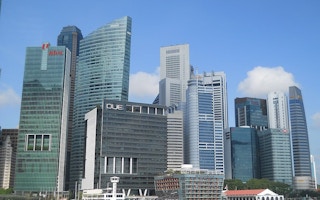Even as financial institutions face challenges with integrating climate risk into their established risk management practices, expectations are already expanding in Asia as regulators broaden the scope of focus beyond climate risk to include environmental risk.
While Asian regulators are approaching environmental risk in different ways, Bank Negara Malaysia (BNM), the Hong Kong Monetary Authority (HKMA) and the Monetary Authority of Singapore (MAS) have all started looking at it – and in ways which could have a profound impact on how financial institutions in the region treat and manage the risk.
These regulators are moving beyond a focus on climate risk management through the lens of maintaining firms’ safety and soundness, thereby reducing threats to financial stability —the approach taken by regulators such as the Australian Prudential Regulation Authority.
This trend started in December 2019 when BNM published a discussion paper. While mainly focused on the financial impacts of climate-related risks, the paper also stated that financial institutions should consider the impact that their counterparties have on the wider ecosystem, ensuring that they do not have track records of environmentally damaging practices.
In May 2020 the HKMA went further, asking the banks it supervises to assess their progress in addressing climate and environmental risks across a range of risk dimensions. The assessment will inform the design of future supervisory expectations and requirements.
In June 2020, MAS announced the consultation on environmental risk management guidelines on financial institutions, setting the highest expectations for firms’ environmental risk management. These guidelines are the most wide-sweeping among Asian regulators, applying to asset managers, insurers and banks and including a broad range of risks.
Implication for Singapore financial institutions
MAS’ guidelines are designed to accelerate the transition to an environmentally sustainable economy through a dramatic expansion of the integration of environmental risk in areas such as financing and investment decisions. The guidelines have also increased the gravity of climate risk, treating it as an existential challenge.
Financial institutions are expected to implement the guidelines within 12 months of their finalisation. To do so will be a challenge for risk professionals who will need to understand the most material environmental risks that their firm is exposed to, and then work out how to incorporate them into their risk management framework and governance processes.
Higher expectation from boards and senior management
Firms will now need to integrate environmental risks such as pollution, loss of biodiversity, and changes in land use into their governance and quantitative frameworks. The increase in scope means much more will be expected from boards and senior management.
For one thing, boards and senior management are tasked with incorporating environmental considerations into risk appetite, strategies and business plans; and developing an environmental risk management framework.
This is in keeping with the findings of GARP’s latest annual global survey of climate risk management at financial firms that shows the most advanced organisations are those with strong levels of engagement from their boards and senior management teams which set the tone to embed risk into existing frameworks.
The next step for managing environmental risks is to identify the risks that their counterparties, clients and firms they invest in are exposed to. Then firms will need to assess the materiality of these risks, potentially using heatmaps like those applied to climate financial risk.
Rethinking environmental risk within existing risk assessment frameworks
MAS made it clear that environmental risks should be considered within existing risk assessments such as credit, market, operational, liquidity, capital markets underwriting, and insurance underwriting.
Consequently, once the material risks have been identified, firms need to develop models to assess the financial impacts of those risks. While existing models can be used as the basis for the assessment, they may need extensive redevelopment to incorporate the effects that environmental risks will have upon companies’ finances.
Financial institutions will also need to integrate environmental risk considerations into their risk appetite statements, and their financing and investment decisions. To do this, new environmental risk metrics will need to be developed, reported internally and disclosed to external stakeholders.
The best solution would be for firms to work together to develop commonly accepted metrics, not only for internal risk management but which also to provide decision-useful information for stakeholders.
Financial institutions are all in it together
As the effects of climate change become better and more widely understood, regulators around the world are turning their attention toward environmental risk management practices as well. The MAS guidelines will put Singaporean financial institutions at the forefront of financial management for environmental risks as they take steps to facilitate the shift to an environmentally sustainable economy through better investment, financing, and underwriting activities.
However, the development of these practices will take time as firms work through the trial and error that typically occurs when new risks are identified. Consequently, firms need to get started building the capability to understand the risk, identifying it and where it is material, and developing techniques for managing and mitigating this new risk type.
Maxine Nelson is Senior Vice President of Global Association of Risk Professionals (GARP) Institute.











